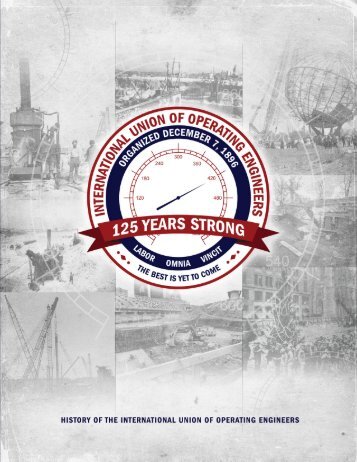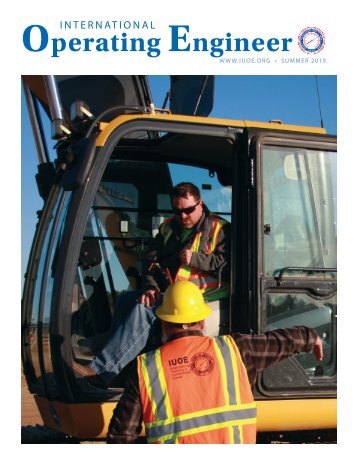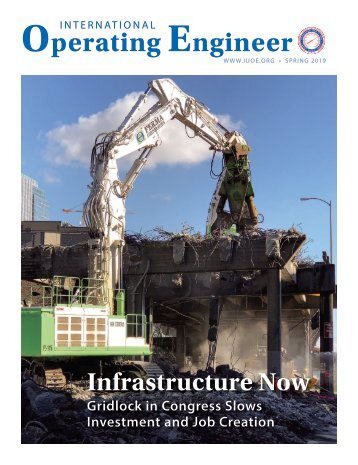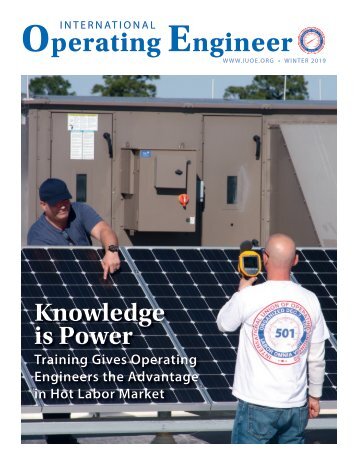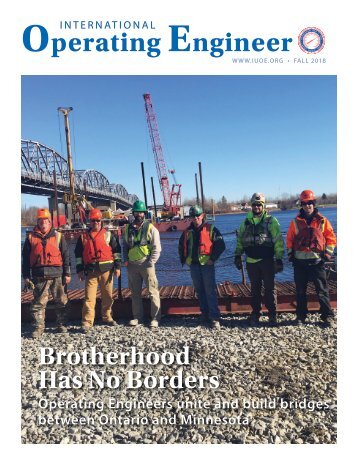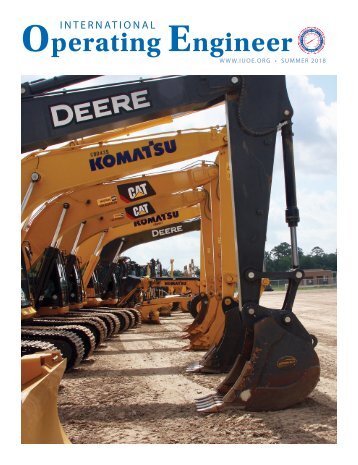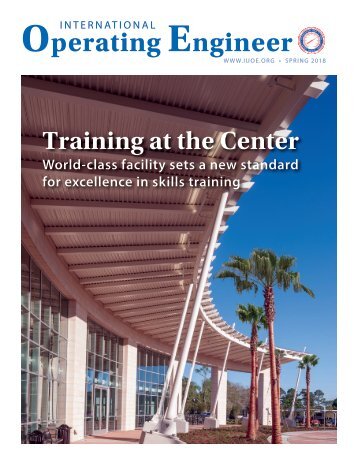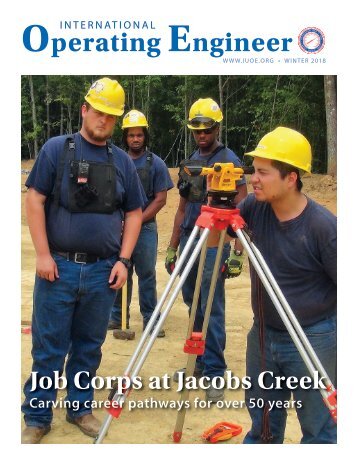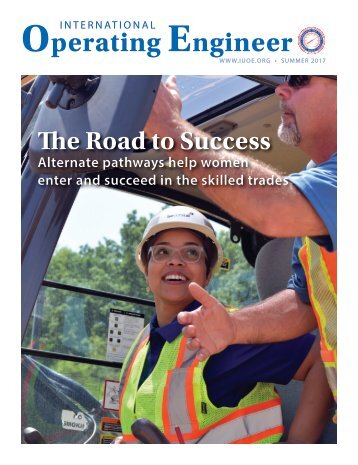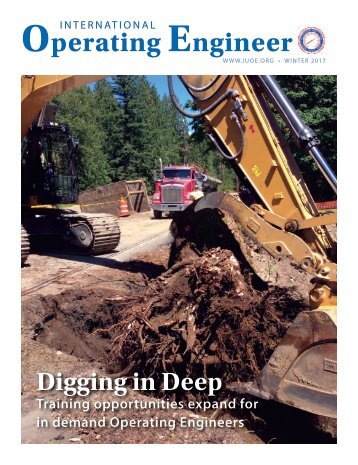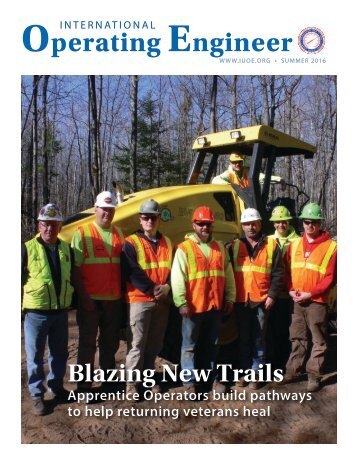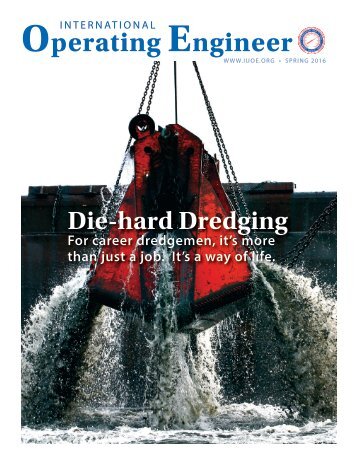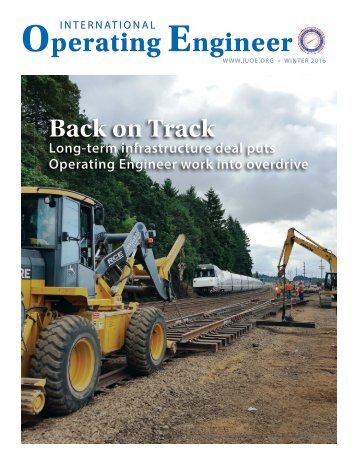International Operating Engineer - Winter 2016
- Text
- Operating
- Engineer
- Iuoe
- Infrastructure
- Operator
- Clinton
- Hillary
- Engineers
- Mobile
- Certificate
HAZMAT New OSHA Outreach
HAZMAT New OSHA Outreach Trainer and Student Cards to be More Durable and Secure The Labor Prospect: What to Watch in 2016 By Justin Miller, The American Prospect Politics & Legislation The Occupational Safety and Health Administration (OSHA) is introducing more durable and secure completion cards for the Outreach Training Program, including 10-hour and 30- hour safety classes. The new cards are intended to reduce fraud and improve efficiency. The Outreach Program 10- and 30-hour safety courses are tailored to construction, general industry and IUOE National HAZMAT Program 1293 Airport Road Beaver, West Virginia 25813 Phone: (304) 253-8674 www.iuoehazmat.org maritime, as well as, a 15-hour class for disaster site workers. These courses are not required by OSHA, but some states, cities, and employers do require workers to complete them. More than 830,000 students were trained under this program in fiscal year 2015. Classes are taught at your local union by instructors authorized by OSHA and trained through the OSHA Training Institute (OTI) Education Centers. At the conclusion of each course, students receive completion cards, which are currently printed on paper. After February 29th, completion cards will be made of a more durable card stock – like a credit card – with authorizing logos, a watermark when copied, and a QR code for authentication. Trainer cards will include trainer name, trainer ID number, expiration date, and OTI Education Center where the trainer was authorized. Student cards will have student name, trainer name, date of issue, and OTI Education Center which produced the card. The cards are expected to reduce fraud because their more durable stock will be more difficult to copy. Also each worker card will have verifiable information, including ways to contact the trainer who conducted the course. They are expected to increase efficiency because the new process will reduce the number of days it takes to request and process cards. Workers who already have 10-hour and 30-hour cards do not need to change over to the new cards. For more information on OSHA’s voluntary Outreach Training Programs, visit www.osha.gov/dte/outreach/ index.html. THE YEAR 2015 was widely regarded as a reinvigorating one for the labor movement, with federal administrative rulings and local minimum-wage ordinances breaking workers’ way. Last year, however, merely set the stage for a much more consequential 2016. This year could either go very badly or very well, depending on a whole host of labor prospects. The year 2016 could be the one in which a majority of the United States becomes right-to-work. It will be the year that the Supreme Court decides one of the most consequential union cases in decades. While the Obama administration’s labor legacy was polished in 2015 with new Department of Labor rules and a blockbuster NLRB decision, 2016 could see even more such rulings. The elephant in the room—the Trans-Pacific Partnership— could tarnish Obama’s labor record, though the trade deal’s passage is more uncertain than ever. And finally, what will happen with the Fight for 15 this year? Will it maintain its surging momentum, or will it wither? A Right-to-Work Nation? Last year, Wisconsin Governor Scott Walker raised the number of right-to-work states to 25 when he pushed through that legislation in his state. In 2016, high-stakes political developments will determine the fate of such laws in at least three states: West Virginia, Kentucky, and Missouri. The West Virginia Senate President Bill Cole has said that he wants to “beat Kentucky to the punch” by making his state the 26th to go right-to-work. Cole, who is trying to unseat Democratic Governor Earl Ray Tomblin in 2016, says he expects right-to-work legislation to be introduced very early in the new legislative session. If the bill passes in the two chambers—an outcome of which Republicans are confident—Tomblin would almost certainly veto it. However, in West Virginia (once the home of what was in the early 20th century the nation’s most powerful union, the United Mine Workers), the legislature needs only a simple majority to override a gubernatorial veto. In Kentucky, conservatives have overcome the political roadblock to passing statewide right-to-work by passing such laws on a county-bycounty basis. Unions challenged the constitutionality of those laws in the courts, but a federal judge has yet to issue a ruling. However, that strategy may not be necessary much longer thanks to conservative Republican Matt Bevin’s upset victory in the race for the Kentucky governor’s seat. Bevin is making right-to-work—in addition to rolling back voting rights and Medicaid—a top priority. The only thing in his way is the Democrats’ control of the Kentucky House of Representatives. But their majority is fragile and Republicans are gunning to win control of the state’s lower house in the 2016 state elections. If Democrats lose the House, right-to-work is as good as guaranteed. Missouri saw its share of right-towork political drama last year when the Republican-controlled House and Senate passed such legislation, only to see it vetoed by Democratic Governor Jay Nixon. They then failed to muster a supermajority to override. The state GOP seems to have accepted defeat for the meantime—the Missouri speaker recently voiced skepticism that Republicans would try to pass right-towork again in the next session. But Nixon’s term is up in 2016 and as Paul Blumenthal reported for The Huffington Post, conservative mega-donors are jostling to shape the Republican gubernatorial primary, in which all candidates have pledged to sign a right-to-work bill. More from the DOL? As Politico’s Morning Shift reports, Obama’s Department of Labor had a productive 2015. The year 2016 may be busier yet, with the anticipated release of three rulemakings: the fiduciary rule (which would curb investor abuses of workers’ retirement funds), the silica rule (which would more strictly regulate worker exposure to the harmful dust), and the muchanticipated new overtime rule (which would double the salary threshold that qualifies for overtime). A recalcitrant Congress could potentially bat down the overtime rule. These labor rulings are part of a fourth-quarter drive from Obama’s White House to shore up his record on workers’ rights. However, such progress, labor advocates argue, is blighted by the administration’s crafting of, and lobbying for, the TPP trade deal. Last year, the labor movement tried and failed to stop Congress from passing a fast-track procedure to ease TPP’s ratification. However, with Bernie Sanders, Hillary Clinton, and Donald Trump all opposing the deal as they campaign for the presidency, the TPP itself won’t even be brought before Congress until after the 2016 election. Excerpted from “The Labor Prospect: What to Watch in 2016,” published January 5, 2016. http://prospect. org/article/labor-prospect-whatwatch-2016 10 INTERNATIONAL OPERATING ENGINEER WINTER 2016 11
- Page 1 and 2: i n t e r n at i o n a l Operating
- Page 4: International Operating Engineer (I
- Page 8: Safety & Health Working Outdoors in
- Page 14: Election 2016: Special Series www.e
- Page 18: Canadian News Building Trades Leade
- Page 22: Union Death Benefit Benefits paid O
- Page 26: International Union of Operating En
Inappropriate
Loading...
Mail this publication
Loading...
Embed
Loading...
International Operating Engineer
HEADQUARTERS
INTERNATIONAL UNION OF OPERATING ENGINEERS (IUOE)
1125 17th Street, NW
Washington, DC 20036
202 429-9100
CONTACT US
Send us an email here.
©2010 International Union of Operating Engineers. All Rights Reserved.|Terms Of Use|Privacy Statement|Sitemap

